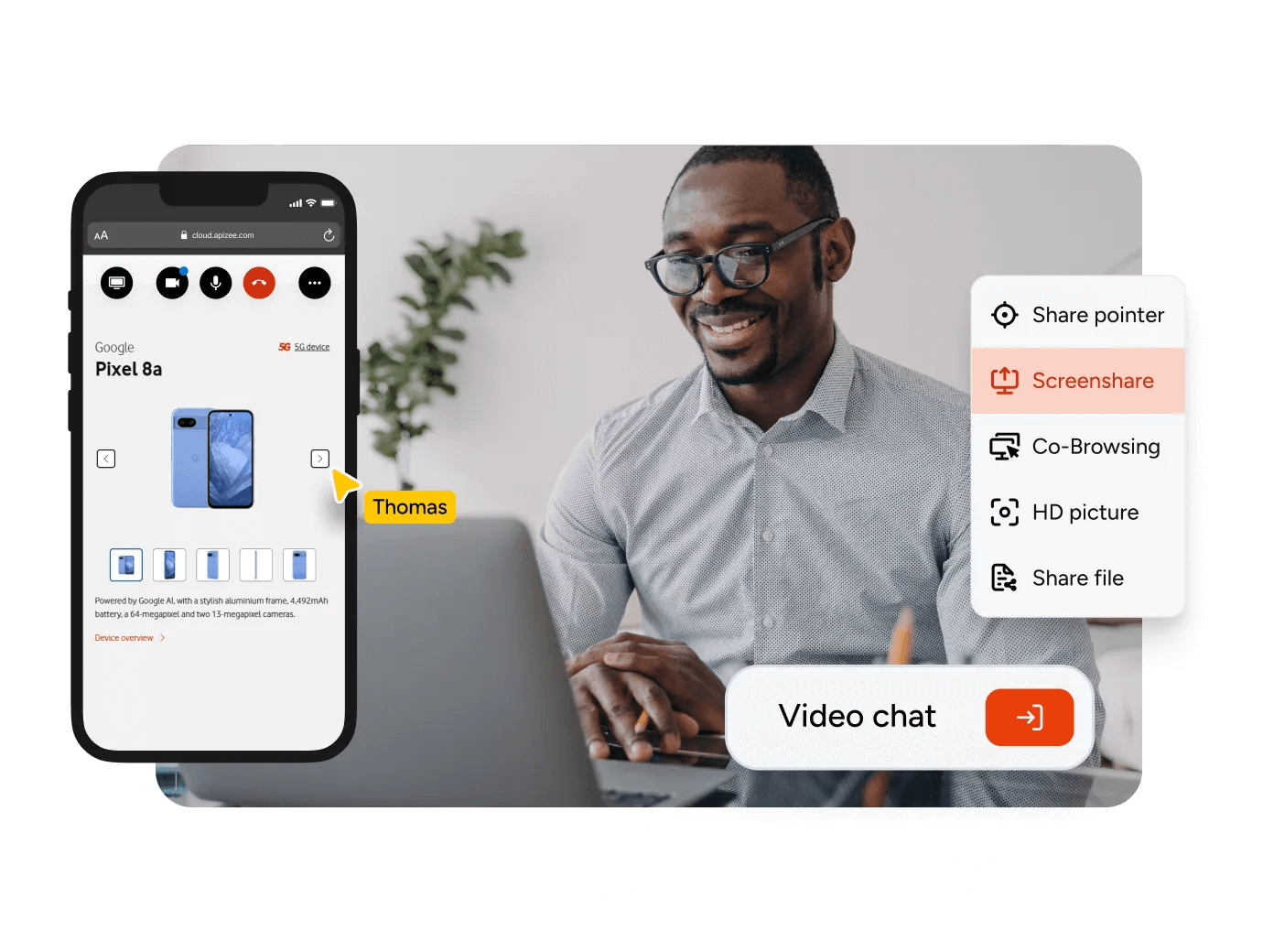The Power of Clienteling: Enhancing Customer Relationships



Customer expectations have evolved dramatically, especially within the luxury retail sector. According to a statistical study by Wavestone on new luxury customer buying habits, clients now demand far more than just a purchase. They seek a holistic, personalized, and customizable experience, with digital interactions playing a crucial role throughout their entire journey.
This shift highlights the importance of clienteling—a strategic approach that enables businesses to meet these heightened expectations by delivering tailored, data-driven customer experiences. In this comprehensive guide, we’ll explore how clienteling can revolutionize your customer relationships, driving loyalty, satisfaction, and business success.
Clienteling is a customer relationship strategy that focuses on creating personalized shopping experiences through the use of detailed customer data. Unlike traditional retail approaches, clienteling goes beyond simple transactions by building long-term, one-on-one relationships between sales associates and customers. By leveraging insights into customer preferences, behaviors, and purchase histories, businesses can offer tailored recommendations, exclusive offers, and personalized services that resonate with each individual customer.
Clienteling is particularly effective in industries where customer loyalty and personalization are paramount, such as luxury retail, hospitality, and high-end services. By implementing clienteling, businesses can foster deeper connections with their clients, leading to increased customer satisfaction, loyalty, and ultimately, higher sales.
Clienteling is more than just a buzzword; it's a strategic approach to customer relationship management that focuses on personalized service and long-term engagement. While traditional Customer Relationship Management (CRM) systems focus on managing customer interactions across various touchpoints, clienteling takes personalization a step further. Instead of simply tracking interactions, clienteling emphasizes building meaningful, one-on-one relationships between sales associates and customers.
Clienteling revolves around understanding the customer on a deeper level. This involves collecting and analyzing data on customer preferences, behaviors, and purchase history. By doing so, businesses can offer personalized recommendations and services that resonate with the customer. The goal is to create a seamless and enjoyable shopping experience that encourages repeat business and fosters loyalty.
Clienteling offers a wealth of benefits that can significantly impact your business, from boosting customer loyalty to driving higher sales. By fostering deeper relationships with customers through personalized service, businesses can create a loyal customer base that not only returns but also spends more.
Let’s delve into the key advantages of implementing clienteling and how it can transform your business.
Clienteling is a powerful tool for building customer loyalty. Personalized and attentive service makes customers feel valued, understood, and connected to your brand. This approach is especially crucial in industries where a small percentage of top customers drive a substantial portion of revenue. For example, luxury retailers report that more than 50% of their revenue comes from just the top 5% of customers. By focusing on these high-value customers through clienteling, businesses can ensure repeat purchases and long-term loyalty.
Clienteling doesn’t just boost loyalty—it directly increases sales. By utilizing customer data to offer tailored recommendations and exclusive offers, sales associates can significantly enhance the shopping experience, leading to more frequent purchases and higher transaction values. The statistics are clear: the success rate of selling to an existing customer is between 60-70%, compared to just 5-20% for new customers. Additionally, increasing customer retention by just 5% can boost profits by 95%. These figures highlight how clienteling can be a key driver of revenue growth.
Retaining existing customers is not only more profitable, but also more cost-effective. Acquiring a new customer can cost five times more than retaining an existing one. By implementing clienteling strategies that deepen customer relationships, businesses can improve retention rates, leading to a more stable and predictable revenue stream. This focus on retention is particularly important as it is much easier and more profitable to keep a satisfied customer than to acquire a new one.
The modern customer expects more than just a transaction—they want a personalized and engaging experience. Clienteling allows businesses to meet and exceed these expectations by providing services that are tailored to each individual’s preferences and needs. This personalized approach enhances the overall customer experience, leading to higher satisfaction levels and positive word-of-mouth, which are invaluable in today’s competitive market.

Successfully implementing clienteling in your business requires a well-planned, strategic approach that integrates data, technology, and human touch. In this section, we’ll walk you through a step-by-step guide to help you maximize the benefits of clienteling and transform your customer relationships.
The foundation of effective clienteling is robust customer data. Start by collecting detailed information on customer preferences, behaviors, and purchase history. This data can be gathered from various touchpoints, including in-store interactions, online shopping behavior, loyalty programs, and customer surveys. The goal is to build a 360-degree view of each customer, allowing you to understand their unique needs and desires. It’s been shown that clienteling can increase the data collection rate by up to 300% and retention rates by as much as 200%.
Once you’ve collected the data, the next critical step is to analyze it to uncover valuable insights. Use advanced analytics tools and AI to identify patterns, trends, and customer segments. This analysis will reveal key insights into customer behaviors, preferences, and potential opportunities for personalized engagement. By understanding what drives your customers, you can tailor your clienteling strategies to resonate more deeply with them.
With the insights gained from your data analysis, the next step is to create comprehensive customer profiles. These profiles should include detailed information such as purchase history, product preferences, shopping habits, and communication preferences. These profiles become powerful tools for your sales associates, enabling them to offer highly personalized recommendations, targeted promotions, and tailored services that align with each customer's unique preferences.
Your sales associates are the front line of your clienteling efforts, and their ability to use customer data effectively is crucial to your success. Invest in comprehensive training programs that equip your team with the skills to interpret customer profiles, engage in meaningful conversations, and provide personalized service that builds long-term relationships. Training should also focus on the use of clienteling software and tools that support data-driven customer interactions.
To effectively implement clienteling in your business, leveraging the right tools is essential. While many customer interactions happen through popular channels like WhatsApp, SMS, FaceTime, Instagram, and WeChat (especially in China), these platforms often lack integration with backend systems crucial for managing inventory, customer preferences, and purchase history. Specialized clienteling solutions bridge this gap, enabling retailers to cultivate personalized, one-on-one relationships with their customers.
Tulip is a comprehensive clienteling platform designed to empower sales associates by providing them with real-time access to customer profiles, inventory data, and communication tools. This software integrates seamlessly with existing retail systems, allowing associates to track customer interactions, offer personalized recommendations, and create a tailored shopping experience. Tulip's ability to unify data across various touchpoints ensures that each customer interaction is both informed and impactful.
StyleSend enhances customer engagement by enabling retailers to send personalized product recommendations and styling advice directly to customers via their preferred communication channels, such as SMS and email. This tool also provides detailed analytics, helping businesses understand customer behavior and refine their clienteling strategies. With StyleSend, retailers can deliver a bespoke shopping experience that resonates with individual customer preferences, driving both loyalty and sales.
Apizee excels in providing advanced video communication tools, which are crucial for retailers aiming to offer a personalized, high-touch customer experience, especially in the realm of virtual clienteling. A standout feature is click-to-video, enabling customers to initiate video calls with a single click directly from a website or app. This capability is particularly valuable for luxury retailers who want to offer personalized consultations, virtual shopping experiences, and real-time customer support. Apizee’s video calls allow sales associates to interact face-to-face with customers, making it easier to build strong relationships and provide tailored advice, all while integrating these interactions seamlessly with customer profiles and preferences. By leveraging Apizee, businesses can elevate their virtual clienteling efforts, ensuring that every digital interaction is as meaningful and personalized as an in-store experience.

While clienteling is often associated with retail, its principles of personalized, relationship-driven customer service can be effectively applied across various industries. This section explores how clienteling can enhance customer relationships and drive business success in different sectors.
In the retail industry, clienteling is a powerful tool for creating personalized shopping experiences that foster customer loyalty. Sales associates leverage customer data to offer tailored recommendations and exclusive offers, making each interaction unique and memorable.
Luxury retail giant LVMH is a prime example of how clienteling can be integrated with digital tools to enhance the customer experience. LVMH is intensely focused on clienteling, equipping 65,000 of its sales associates with iPhones and a custom app designed to interact with customers before, during, and after their store visits. This app facilitates remote sales and social media interactions, allowing associates to provide personalized advice and maintain strong relationships with customers even outside the store environment. According to LVMH’s CIO, the goal is to create an "augmented advisor" supported by an omnichannel journey and inventory management tailored to this strategy. This approach ensures that LVMH’s customers receive a seamless, highly personalized experience, whether they are shopping in-store or engaging with the brand digitally.
Another example is Saks Fifth Avenue, which has expanded its Fifth Avenue Club, where customers can visit one of 30 private suites to meet with a stylist who has pre-selected clothing, shoes, jewelry, and handbags based on the client's tastes, needs, size, and designer preferences. These private showings often include refreshments and an ambiance that aligns with the expectations of their ultra-wealthy clientele, ensuring a luxurious and highly personalized shopping experience.

In the hospitality industry, clienteling enhances the guest experience by providing highly personalized services that cater to individual preferences. Hotels use clienteling techniques to remember guest details such as preferred room type, dietary restrictions, and special requests. Luxury hotel brands like Four Seasons and Ritz-Carlton have mastered clienteling, offering personalized concierge services, room preferences, and customized amenities that make guests feel uniquely cared for. This approach not only enhances guest satisfaction but also encourages repeat visits and long-term loyalty.
In the banking sector, clienteling allows relationship managers to offer bespoke financial advice and products tailored to each client’s financial history, goals, and preferences. This personalized approach can strengthen client relationships, increase trust, and drive business growth. By understanding a client’s financial journey and anticipating their needs, banks can provide proactive solutions that resonate on a personal level, setting them apart in a competitive marketplace.
Airlines are increasingly adopting clienteling strategies to enhance the customer experience, particularly for their most valuable passengers. For example, Air France has implemented a clienteling strategy specifically for its top 350 clients—those who fly more than fifty times annually in first class and account for 10% of the airline’s revenue. Recognizing the strategic importance of these customers, Air France offers them a premium, personalized service. This includes tailored communication where the communications director personally engages with these clients to better understand their needs and preferences, thereby continuously evolving the airline’s offerings to ensure their satisfaction and loyalty.
Clienteling represents a transformative approach to customer service, emphasizing personalization and deepening relationships to enhance customer loyalty and drive sales. By understanding and implementing clienteling strategies, businesses can provide a more tailored experience that not only meets but exceeds customer expectations. From leveraging detailed customer data to adopting advanced tools and techniques, clienteling offers a pathway to build stronger, more engaged customer connections across various industries.
As you explore the benefits and strategies of clienteling, consider integrating innovative tools like Apizee’s video communication solutions. Apizee’s click-to-video feature allows for seamless virtual consultations, making it easier for businesses to offer real-time, personalized support.
Ready to elevate your customer experience with virtual clienteling? Contact Apizee today to learn how our video communication tools can transform your customer interactions and drive business success.
Contact usExplore key findings from the Genesys State of Customer Experience report. Learn how AI, omnichannel strategies, and video chat are transforming CX and enhancing customer satisf...
The State of Customer Experience report by Genesys : Key Insights and Trends
27 Mar 2025
Despite AI and automation, customers still prefer to speak to a human for support. Discover why human interaction remains essential for great customer service.
Why Customers Still Want to Speak to a Human in Customer Service
17 Mar 2025
Discover the top customer experience influencers in Europe, shaping the future of CX and customer service.
Top 100 Customer Experience Influencers to follow
10 Mar 2025
Interested in our solutions?